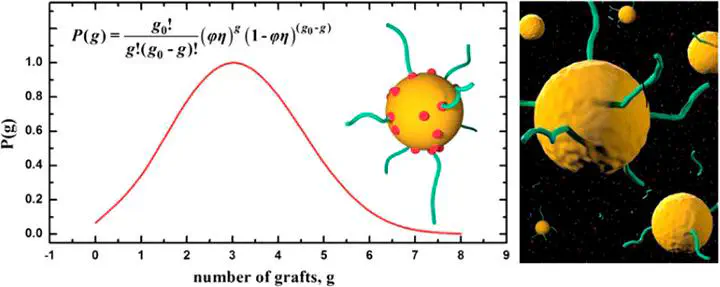Distribution of the Number of Polymer Chains Grafted on Nanoparticles Fabricated by Grafting-to and Grafting-from Procedures
 featured.jpg
featured.jpg
Abstract
We demonstrate that polymer number distribution (PND) for polymer grafted nanoparticles (NPs) fabricated via the grafting-to technique can be described, without any fitting parameters, as a function of the conversion of polymer chains. This distribution function is convenient to be applied since the variables in PND are directly linked to experimental measurements and easy to be obtained. As an independent validation, the molecular dynamics simulation in this study is important since the experimental approach may be prone to artifacts that result from the complex parameters. This distribution is further generalized to describe the PNDs for polymer grafted NPs fabricated via the grafting-from technique. Our study implies that the grafting process, no matter grafting-to or grafting-from, does not alter the heterogeneity. Our results also provide evidence that the Poisson model, often invoked to describe the PND in previous experiments, is not accurate. We also show that the binomial form function of PND will not break down even in the cases of relatively large polymer chain length, high binding site density, and high polymer concentration. This function is quite effective since it naturally involves most influencing factors through polymer chain conversion. This study helps to better understand the ligand chain number distribution for polymer-grafted NPs fabricated via both grafting-to and grafting-from techniques.